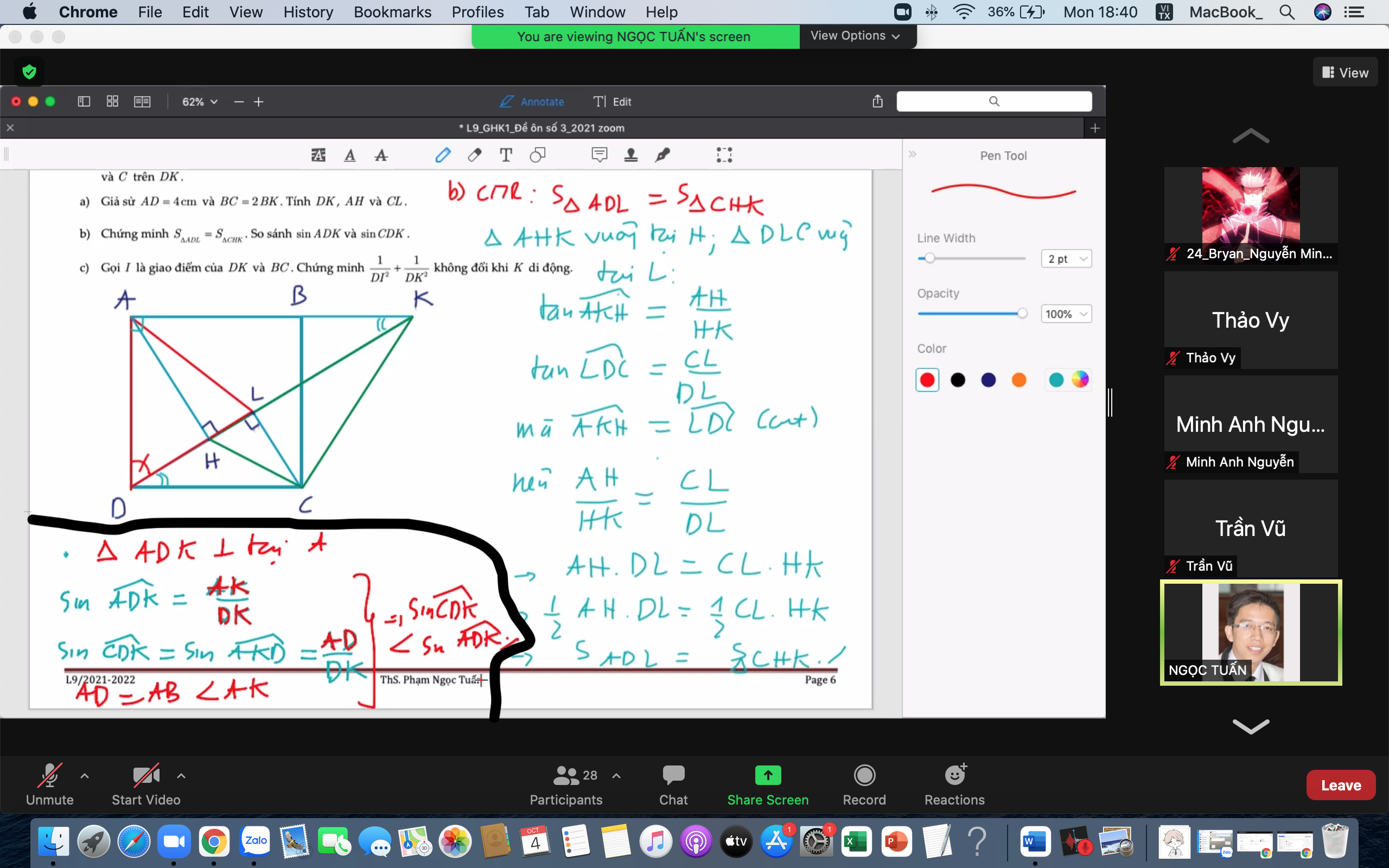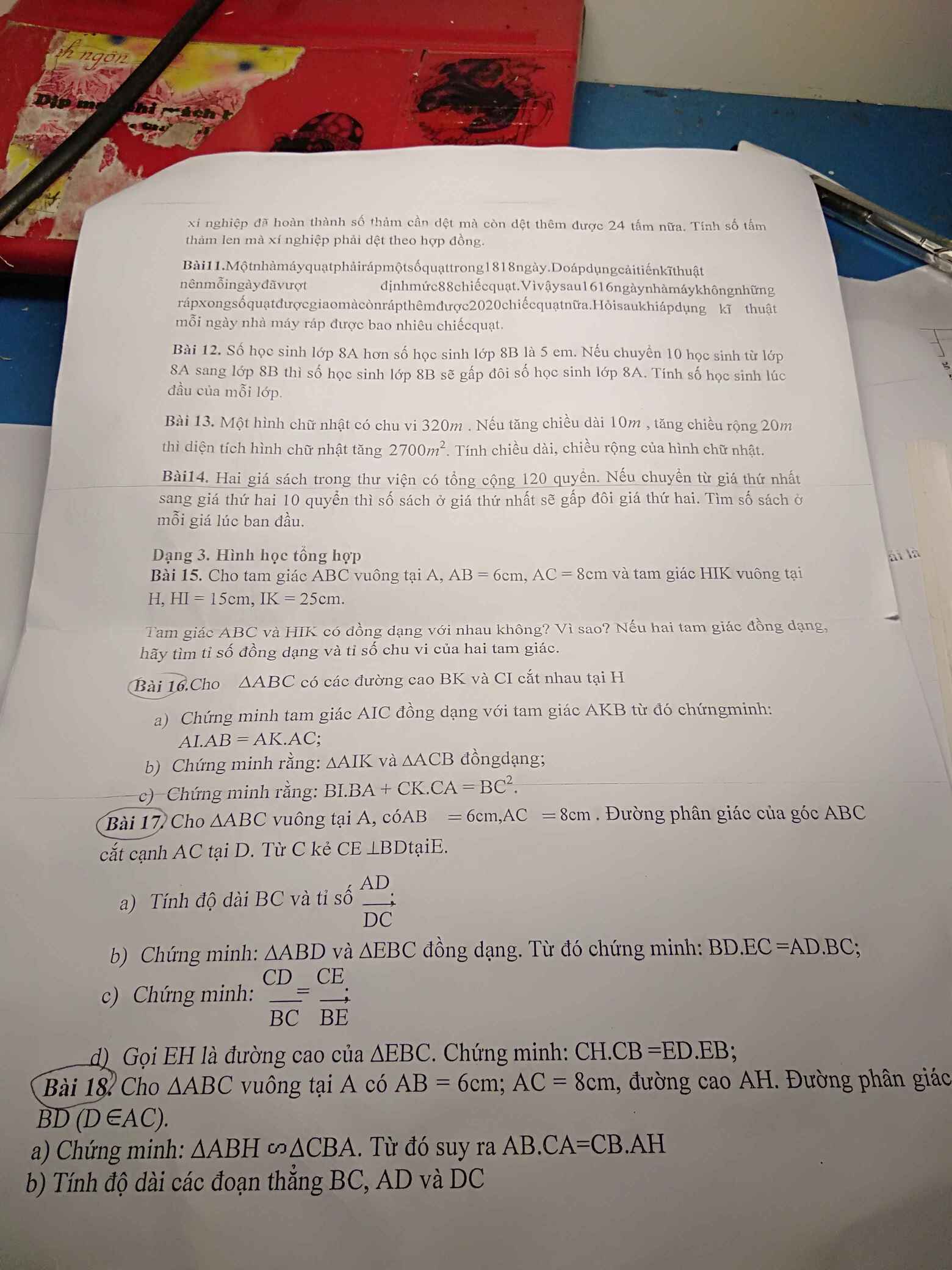
Hãy nhập câu hỏi của bạn vào đây, nếu là tài khoản VIP, bạn sẽ được ưu tiên trả lời.




1.1
Pt có 2 nghiệm trái dấu và tổng 2 nghiệm bằng -3 khi:
\(\left\{{}\begin{matrix}ac< 0\\x_1+x_2=-3\end{matrix}\right.\)
\(\Leftrightarrow\left\{{}\begin{matrix}2\left(m+2\right)< 0\\\dfrac{2m+1}{m+2}=-3\end{matrix}\right.\)
\(\Leftrightarrow\left\{{}\begin{matrix}m< -2\\m=-\dfrac{7}{5}\end{matrix}\right.\)
\(\Rightarrow\) Không tồn tại m thỏa mãn
b.
Pt có nghiệm kép khi:
\(\left\{{}\begin{matrix}m+2\ne0\\\Delta=\left(2m+1\right)^2-8\left(m+2\right)=0\end{matrix}\right.\)
\(\Leftrightarrow\left\{{}\begin{matrix}m\ne-2\\4m^2-4m-15=0\end{matrix}\right.\)
\(\Rightarrow\left[{}\begin{matrix}m=\dfrac{5}{2}\\m=-\dfrac{3}{2}\end{matrix}\right.\)

8:
\(=\dfrac{cos10-\sqrt{3}\cdot sin10}{sin10\cdot cos10}=\dfrac{2\left(\dfrac{1}{2}\cdot cos10-\dfrac{\sqrt{3}}{2}\cdot sin10\right)}{sin20}=\dfrac{sin\left(30-10\right)}{sin20}=1\)
10:
\(=\left(2-\sqrt{3}\right)^2+\left(2+\sqrt{3}\right)^2\)
=7-4căn 3+7+4căn 3=14
12:
\(=cos^270^0+\dfrac{1}{2}\left[cos60-cos140\right]\)
\(=cos^270^0+\dfrac{1}{2}\cdot\dfrac{1}{2}-\dfrac{1}{2}\cdot2cos^270^0+\dfrac{1}{.2}\)
=1/4+1/2=3/4


Xét đồ thị thấy x = 2 -> y = 0
và x = -2 -> y = 0
Nên f(x) = f (-x ) -> Chọn A

Lời giải:
a. TXĐ: $\mathbb{R}$
Với $x\in\mathbb{R}$ thì $-x\in\mathbb{R}$
$f(x)=|x|=|-x|=f(-x)$
$\Rightarrow $ hàm chẵn
b. TXĐ: $\mathbb{R}$
Với $1\in\mathbb{R}$ thì $-1\in\mathbb{R}$
$f(1)=9; -f(1)=-9; f(-1)=1$
$\Rightarrow f(1)\neq f(-1); -f(1)\neq f(-1)$ nên hàm không chẵn không lẻ.
c.
TXĐ: $\mathbb{R}$
Với $x\in\mathbb{R}$ thì $-x\in\mathbb{R}$
$f(-x)=(-x)^3+(-x)=-(x^3+x)=-f(x)$ nên hàm lẻ
d.
TXĐ: $\mathbb{R}$
Với $1\in\mathbb{R}$ thì $-1\in\mathbb{R}$
$f(1)=3; f(-1)=1$
$\Rightarrow f(1)\neq f(-1); -f(1)\neq f(-1)$
Do đó hàm không chẵn không lẻ.

16.
Hệ tọa độ giao điểm: \(\left\{{}\begin{matrix}2+t=2+3t'\\-t=3-2t'\end{matrix}\right.\)
\(\Rightarrow\left\{{}\begin{matrix}t=-9\\t'=-3\end{matrix}\right.\)
Thay \(t=-9\) vào pt d ta được: \(\left\{{}\begin{matrix}a=-7\\b=9\end{matrix}\right.\)
\(\Rightarrow a+b=2\)
17.
Do d qua M nên: \(\dfrac{-3}{a}+\dfrac{3}{2b}=1\) (1)
d cắt tia đối Ox tại A \(\Rightarrow a< 0\) và \(OA=-a\)
d cắt Oy tại b \(\Rightarrow b>0\) và \(OB=b\)
\(OA=2OB\Rightarrow-a=2b\)
Thế vào (1): \(\dfrac{-3}{a}+\dfrac{3}{-a}=1\Rightarrow a=-6\Rightarrow b=\dfrac{-a}{2}=3\)
\(\Rightarrow ab=-18\)
18.
Gọi A là giao điểm của d với Ox
\(\Rightarrow y_A=0\Rightarrow\dfrac{x_A-1}{2}=\dfrac{0+1}{-4}\Rightarrow x_A=\dfrac{1}{2}\)
\(\Rightarrow OA=\left|x_A\right|=\dfrac{1}{2}\)
Gọi B là giao điểm của d với Oy
\(\Rightarrow x_B=0\Rightarrow\dfrac{0-1}{2}=\dfrac{y_B+1}{-4}\Rightarrow y_B=1\)
\(\Rightarrow OB=\left|y_B\right|=1\)
\(S=\dfrac{1}{2}OA.OB=\dfrac{1}{4}\)










Đồ thị hướng lên nên a > 0 => Loại A,B
Dựa vào đồ thị, A( 1; 0) thuộc đồ thị => Chọn C